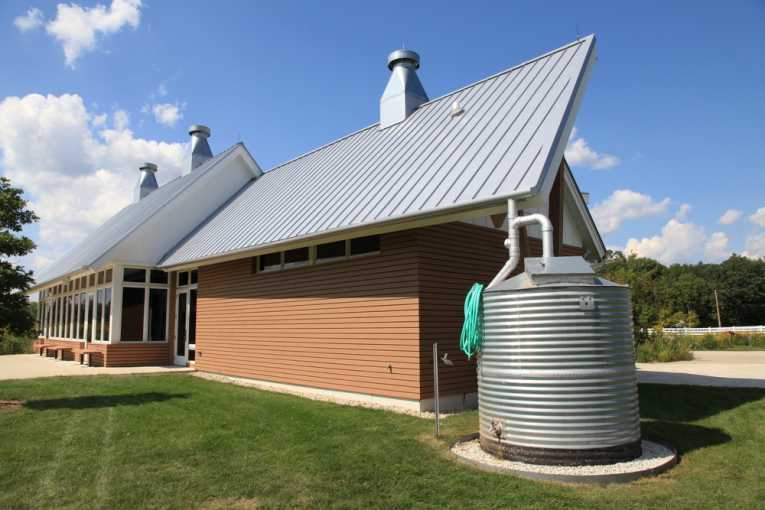Cities can vastly improve their water usage efficiency by building simple sloping roofs that facilitate the collection of rainwater runoff. Sloped roofs collect 50% more rainwater than flat, gravel-topped roofs, and the rain collected is of higher quality. A study published recently by researchers at Autonomous University of Barcelona (UAB, Spain) finds that simple tweaks to roof design could allow urban planners to realize significant improvements in water use efficiency.

Rainwater runoff via Shutterstock
Researchers noted that saved water can be used to water public gardens, wash vehicles and streets, etc. "It is important to consider the collection of rainwater when planning and designing cities, as this is an alternative water source with many different uses, it can even be used to save drinking water," said Ramon Farreny, co-author of various UAB projects. Roofs are "the first choice for collecting rainwater in urban areas, but not all roofs function in the same way and it is necessary to select the most appropriate ones".
Appropriate roof shape and texture mens smooth and sloped, not flat and rough. By incorporating the findings into urban design, city planners could simultaneously improve flood control while providing alternative water sources for increasingly taxed municipal drinking-water supplies. "The costs and environmental impact of these systems have yet to be assessed", said Tito Morales-Pinzon, another author of the study and a researcher at UAB and Pereira Technological University (Colombia), "because although one material may be efficient in collecting or storing the rainwater, it may also be too expensive or cause contamination".
The best systems include a covered rainwater collection tank installed on the roof, researchers said. The economic feasibility of converting cities' vast roof areas to efficient rainwater-collection systems remains to be established, but projected rising water prices are expected to offset the investment costs associated with installing these systems.















